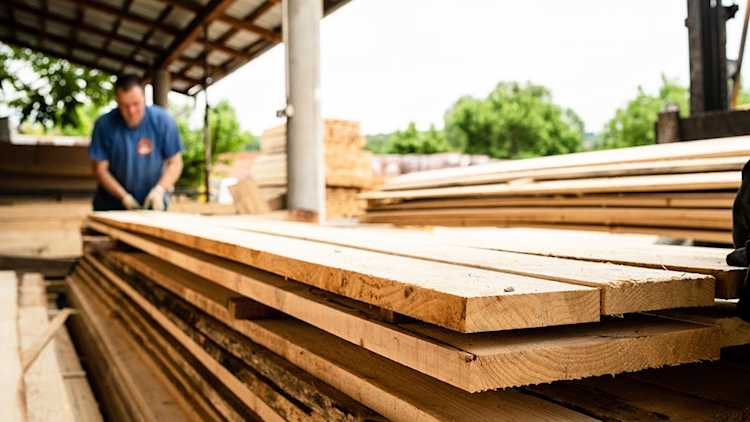Record-high lumber prices are boosting construction costs – are they here to stay?

In the past few months, the price of lumber for wood frame construction and manufacturing of products for construction and renovation has risen significantly, doubling from June to September 2020.
A matter of supply and demand
The lockdown that came at the start of the pandemic led to a boom in construction and renovation projects, resulting in an unexpected increase in lumber demand. Demand is also very strong in the United States, accounting for 65% of the Canadian lumber market.
With lumber mills also forced to curtail production capacity, we now have a supply and demand imbalance.
Table 1: Weekly lumber prices in North America
| Dollars per thousand board feed ($/MBF) | Sep-18, 2020 | Four-week average | 52-week average |
|---|---|---|---|
| 2x4 eastern spruce-pine-fir (Canadian dollars) | 1,270 | 1,250 | 649 |
| 2x4 eastern spruce-pine-fir (kiln dried) #2 and better (U.S. dollars) | 960 | 957 | 468 |
| Composite (U.S. dollars) | 955 | 934 | 469 |
Source: Natural Resources Canada
Will high prices persist?
In the futures markets, September 2020 lumber prices reached a record-high US$1,000/MBF (thousand board-feet) before closing at US$920/MBF. Futures prices are a strong indicator of market expectations. The March 2021 price is higher ($457) than the 2019-2020 average ($375).
For September 2021, the price is $435, which is slightly higher than the 2018-2019 average ($397). This indicates the markets believe the demand spike is temporary and prices will drop over the coming months, although they’ll remain high.
Construction costs up
Material prices have a direct impact on construction costs. Other factors are also at play, including the labour shortage, new social distancing rules on construction sites and a scarcity of other materials.
The construction costs increase appears to be felt in all sectors like commercial/industrial, agricultural and residential. Now, building categories in which wood is more commonly used are the most heavily affected.
For example, a multi-storey broiler barn could cost up to 30% more to build now than it did last spring. On the other hand, a hog feeder barn with a partial concrete structure may only cost 5 to 10% more.
Tools to cope with the price increase
Although it’s impossible to hedge against every risk of price fluctuation, some strategies are available:
Opt for a closed bidding process to guarantee material prices. In the current context, this poses a risk if prices drop. Also, not all contractors will consider closed bidding.
Delay your project. This may provide a temporary solution to the sudden price hike. However, it’s only advantageous if the project can wait, and there’s a downward price adjustment in the short term.
Explore other construction materials options. Less expensive alternatives may be available. Only a qualified contractor can help you sort through the various options.
Planning and verifying your project cost estimate, before you start work, is critical to ensure you don’t fall short of funds. For peace of mind, always add a contingency of 10% to 20% for unforeseen project expenses.
Will construction costs impact property value?
Although lumber prices are expected to return to normal in the medium-term, other factors, such as labour scarcity, seem to be a more permanent phenomenon. So, it wouldn’t be surprising to see the upward pressure on construction costs continue for some time.
A temporary rise in lumber prices will likely have little impact on the market value of properties. However, if prices remain high, there may eventually be some upward pressure on the market value.
Éric Lemaire, É.A., Senior Appraiser
Olivier Biron, É.A. agr., Manager, Valuations